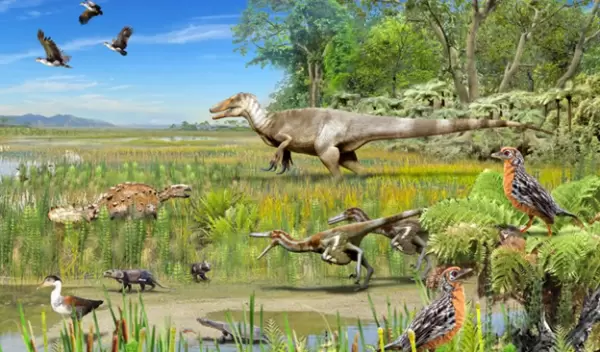
Fossils reveal dinosaurs of prehistoric Patagonia
A study led by scientists at The University of Texas at Austin is providing a glimpse into dinosaur and bird diversity in Patagonia during the Late Cretaceous, just before the non-avian dinosaurs went extinct.
The fossils represent the first record of theropods — a dinosaur group that includes both modern birds and their closest non-avian dinosaur relatives — from the Chilean portion of Patagonia. The researchers' finds include giant megaraptors with large sickle-like claws and birds from the group that also includes today’s modern species.
"The fauna of Patagonia leading up to the mass extinction was really diverse," said lead author Sarah Davis. "You've got your large theropod carnivores and smaller carnivores as well as these bird groups coexisting alongside other reptiles and small mammals."
The U.S. National Science Foundation-supported study was published in the Journal of South American Earth Sciences. “This study indicates a need for a better understanding of the global fossil record for birds and other theropod dinosaurs, especially from southern South America and Antarctica,” said Mike Jackson, head of NSF’s Antarctic Sciences Section. “The fossil discoveries highlighted in this study are critical to accurately assessing global trends in dinosaur diversity.”
The researchers, led by Julia Clarke at UT Austin, identified the theropods from small fossil fragments — the dinosaurs mostly from teeth and toes, the birds from small bone pieces. Davis said that the enamel glinting on the dinosaur teeth helped with spotting them among the rocky terrain.
Some researchers have suggested that the Southern Hemisphere faced less extreme or more gradual climatic changes than the Northern Hemisphere after the asteroid strike. This may have made Patagonia and other places in the Southern Hemisphere a refuge for birds, mammals and other life that survived the extinction. The researchers said the study can aid in investigating this theory by building up a record of ancient life before and after the extinction event.


